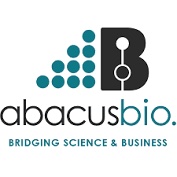Back in 2019, Alberta Innovates contracted AbacusBio—an ag science and business consulting company with core capability in breeding and genetics—to do an impact assessment of its dollars going into genomics research. That included an impact assessment of Gentec, and resulted in a high-level framework for the future. Fast forward to 2022, AbacusBio and former Gentecer John Crowley are back to flesh out that framework, especially around the funding structure, and Gentec’s sustainability.
John Crowley came to Gentec from Ireland in 2011 as a post-doc working on the Canadian Cattle Genome Project. He soon transitioned to BeefBooster in a role bridging Gentec and industry on genetic improvement. In 2014, he joined the Canadian Beef Breeds Council as Director of Scientific and Industry Advancement, which saw him conveniently co-located in Gentec offices and facilitated an adjunct professorship at the same time. AbacusBio opened an office in Edinburgh in 2018, and that’s where John found himself next.
“I’ve been in touch with this company since grad school and always admired its work,” says John. “When the opportunity came to be part of it, and close to home in Ireland, I jumped.”
Still with AbacusBio, John returned to Edmonton in 2021 to bring the company’s capabilities to the North American market in a more formal way than individual consultants.
“So instead of a few bullet points in the framework, we’re planning out a full five-year strategy, with the aim of reducing government funding as time goes on,” says John.
The background work involved deep reading of Gentec management reports and other reports; talking to Gentec staff/management, stakeholders who benefit from Gentec R&D; and funders to determine their priorities and what they want to fund in ag and genetics research.
The report, which is expected by end 2022, will take the form of a project proposal to take to funders. Very, very clever… because this avoids the time-consuming step of translating one type of document into another, and because funders and competitions have already been identified (notably, RDAR, CAAIN and Genome Canada) to which Gentec can bring value.
Funding is one piece of the strategy; one that scientists are familiar with. Branding, a second piece, is not usually in their wheelhouse. Clarifying Gentec’s role with industry will be critical.
“One approach is to get Gentec up as an institute for animal genetics within UAlberta with a focus on knowledge translation towards producers,” says John.
This would move Gentec away from the “centre of excellence” branding, which is federal language, and re-emphasize the affiliation to the university. The objective is to focus more on Alberta as the hub of beef cattle and swine genetics in Canada.
Gentec may be the best-kept secret in Canadian agriculture, partly because of the lack of stable funding for a top-notch industry liaison person. The strategic plan advocates for a steady stream of funding for such a person, funded through the above competitions.
“We know that profit is controlled by genetics,” says John. “Huge percentages in some cases. I see Gentec as the only obvious place for genetics R&D in Western Canada. So many organizations and producers can benefit from this incredible capacity that’s right in their back yards. THAT’S where we need to be.”

